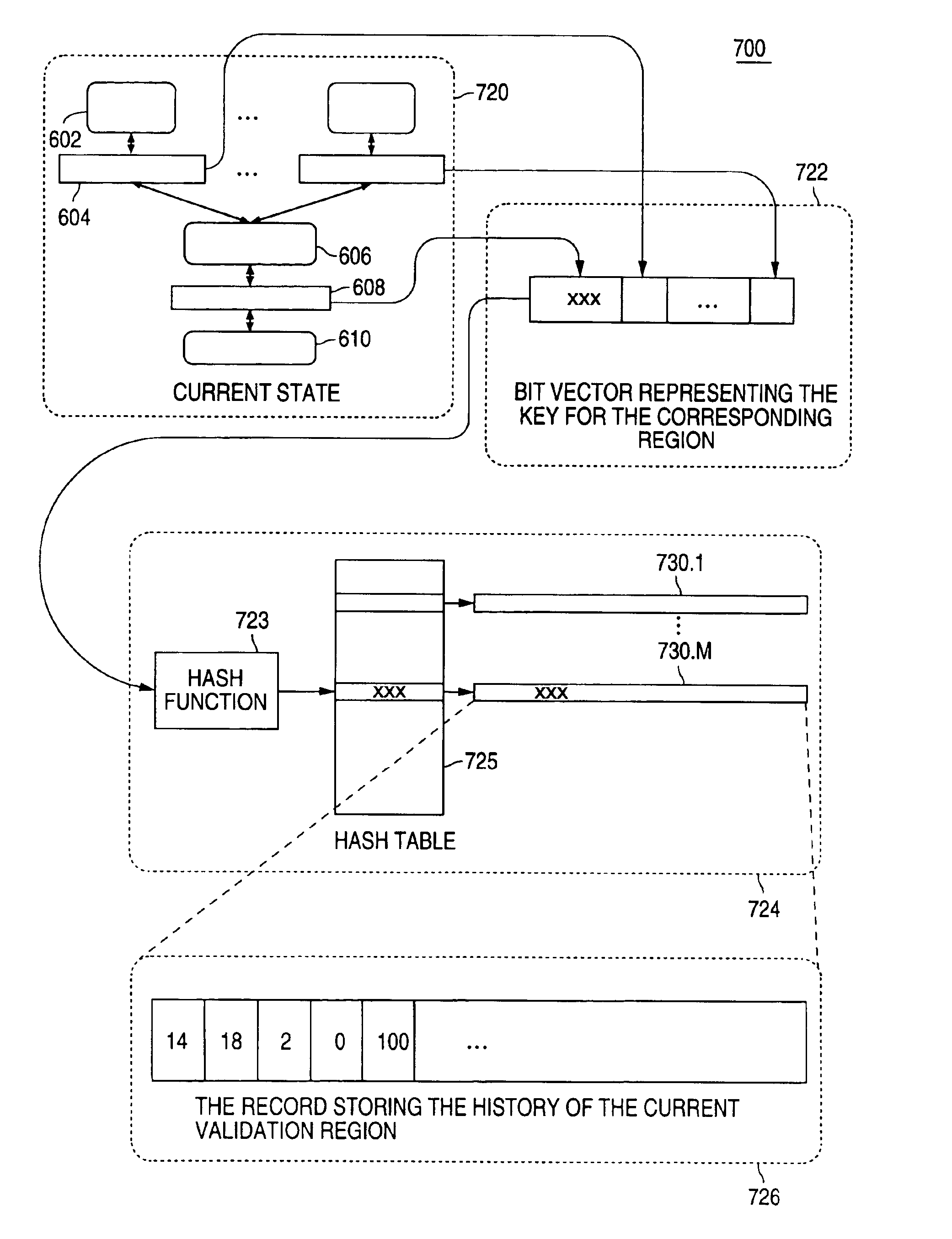Method and apparatus for transforming test stimulus
a technology of test stimulus and stimulus sequence, applied in the field of methods and apparatus, can solve the problems of only covering the simulation process, difficult to write a set of test stimulus sequences that would simulate all aspects of a digital design, and difficult to cover the coverage problem
- Summary
- Abstract
- Description
- Claims
- Application Information
AI Technical Summary
Benefits of technology
Problems solved by technology
Method used
Image
Examples
Embodiment Construction
[0028]To overcome the shortcomings of the available art, the present invention discloses a novel method and apparatus for validating digital designs.
[0029]FIG. 1 is a flowchart illustrating a traditional simulation process to validate a digital design.
[0030]Before performing the simulation process shown in FIG. 1, a memory region C is set to store the current state.
[0031]Step 104 receives a sequence of test stimuli provided by the designer (or user) to simulate certain aspects of a digital design, and a target simulation time provided by the designer to indicate when to terminate the simulation process.
[0032]Step 106 stores the initial state in the memory region C to set the initial state as the current state of the digital design.
[0033]Step 108 determines whether to terminate the simulation process. The simulation can be terminated in two situations: (1) if the target simulation time is reached, or (2) the execution of the simulation specifies a termination. If step 108 determines ...
PUM
 Login to View More
Login to View More Abstract
Description
Claims
Application Information
 Login to View More
Login to View More - R&D
- Intellectual Property
- Life Sciences
- Materials
- Tech Scout
- Unparalleled Data Quality
- Higher Quality Content
- 60% Fewer Hallucinations
Browse by: Latest US Patents, China's latest patents, Technical Efficacy Thesaurus, Application Domain, Technology Topic, Popular Technical Reports.
© 2025 PatSnap. All rights reserved.Legal|Privacy policy|Modern Slavery Act Transparency Statement|Sitemap|About US| Contact US: help@patsnap.com



